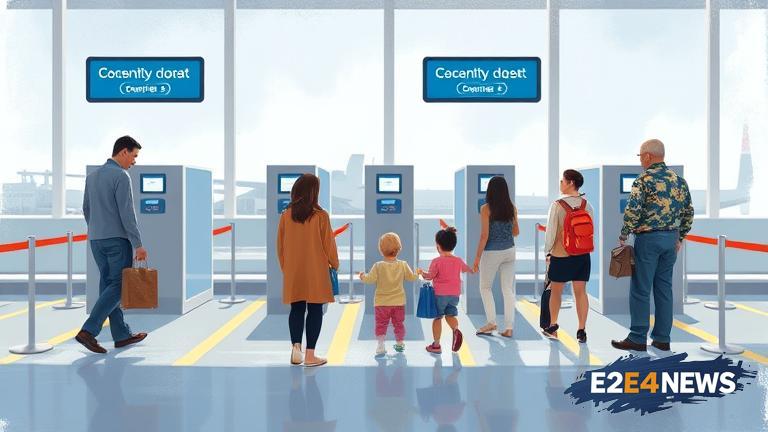The Transportation Security Administration (TSA) has announced the expansion of its security checkpoint lanes, designed to accommodate the specific requirements of families with children and military members. This initiative aims to streamline the security process, reducing wait times and minimizing stress for these groups. The new lanes are equipped with specialized equipment and staffed by trained personnel, familiar with the needs of families and military members. The TSA recognizes that traveling with children can be challenging, and the new lanes are designed to make the security process more efficient and less intimidating for young travelers. Additionally, the lanes will provide a more private and comfortable environment for families to navigate the security process. Military members will also benefit from the expanded lanes, which will provide a more streamlined and respectful experience. The TSA has collaborated with various stakeholders, including airlines and airport authorities, to ensure that the new lanes meet the needs of these groups. The expansion of the security checkpoint lanes is part of the TSA’s ongoing efforts to improve the travel experience for all passengers. The agency has implemented various initiatives in recent years, including the use of advanced screening technologies and enhanced passenger screening procedures. The TSA has also increased its outreach and engagement efforts, providing travelers with valuable information and resources to help them navigate the security process. Furthermore, the agency has expanded its TSA Cares program, which provides assistance to passengers with disabilities and medical conditions. The program offers a helpline and online resources, providing travelers with guidance and support throughout their journey. The TSA’s expansion of security checkpoint lanes is a significant development, demonstrating the agency’s commitment to providing a more efficient and respectful travel experience for all passengers. The new lanes will be rolled out at airports across the United States, with the goal of improving the overall travel experience for families, children, and military members. The TSA’s efforts to enhance the travel experience are part of a broader initiative to improve aviation security and facilitate the free flow of passengers and cargo. The agency works closely with international partners to share best practices and stay ahead of emerging threats. The TSA’s expansion of security checkpoint lanes is a positive development for travelers, and the agency will continue to evaluate and refine its procedures to ensure that they remain effective and efficient. In addition to the expansion of security checkpoint lanes, the TSA has also implemented various other initiatives to improve the travel experience. These include the use of biometric technologies, such as facial recognition, to enhance security and streamline the passenger screening process. The TSA has also expanded its use of computed tomography (CT) scanners, which provide a more detailed and accurate image of carry-on bags and their contents. The agency has also increased its focus on cybersecurity, recognizing the growing threat posed by cyber attacks to the aviation industry. The TSA’s efforts to improve the travel experience are ongoing, and the agency will continue to work with stakeholders to identify areas for improvement and implement new initiatives. The expansion of security checkpoint lanes is a significant step forward, and the TSA will continue to evaluate and refine its procedures to ensure that they remain effective and efficient. The agency’s commitment to providing a more efficient and respectful travel experience for all passengers is unwavering, and the expansion of security checkpoint lanes is a positive development for travelers. The TSA’s initiatives to improve the travel experience are part of a broader effort to enhance aviation security and facilitate the free flow of passengers and cargo. The agency will continue to work with international partners to share best practices and stay ahead of emerging threats, ensuring that the aviation industry remains safe and secure.





